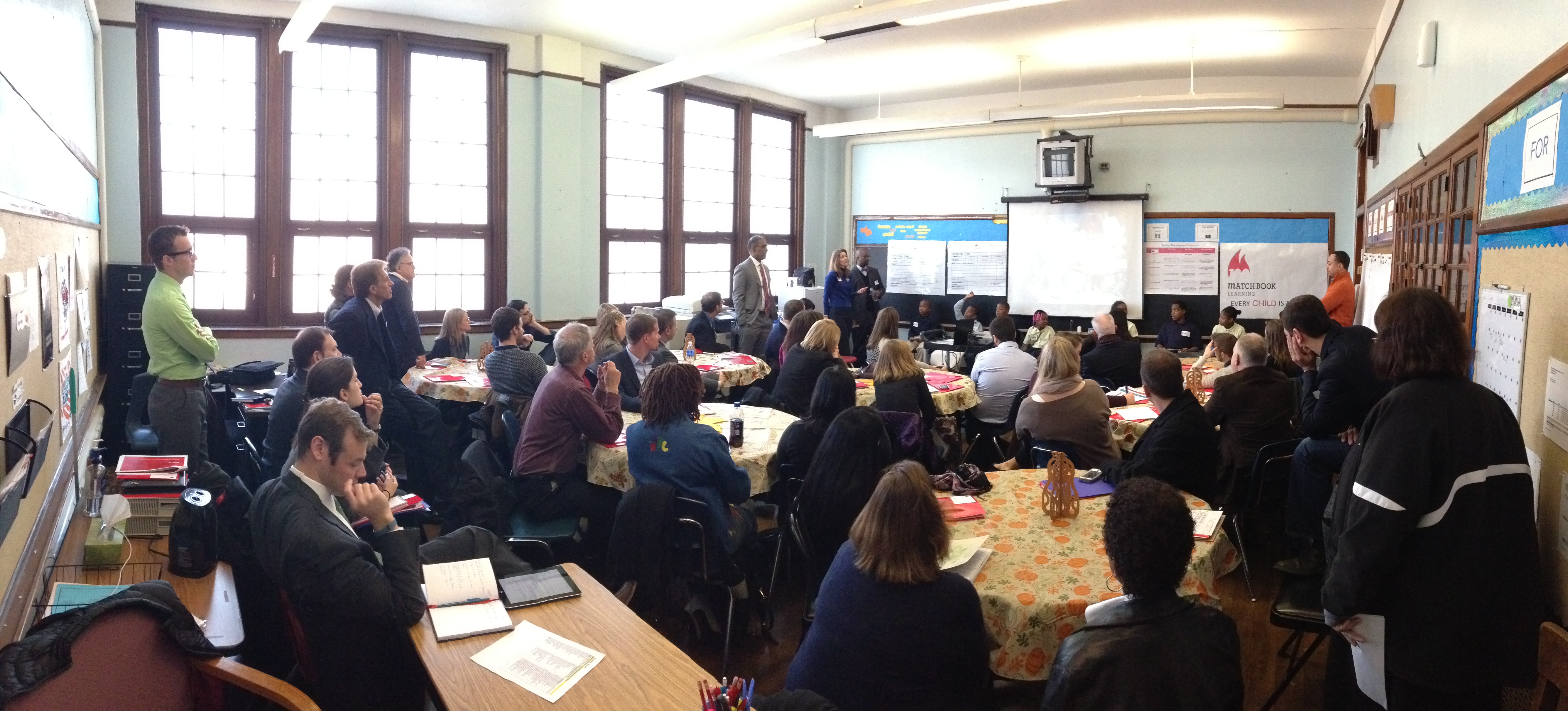
National Blended Learning Entrepreneurs & Experts visit Matchbook at Burns in Detroit - Part II
November 26, 2013
An amazing group of fellow blended school entrepreneurs, funders and experts from around the country recently visited one of our schools, Burns Elementary/Middle as a part of a learning tour of breakthrough, next generation school models.
After touring our school, talking with both teachers and students alike, our guests and Matchbook engaged in a dialogue around how to best prepare teachers to design, create, facilitate and lead student-centered classrooms like the ones at Burns.
The discussion uncovered 3 tensions involved in launching a blended model:
1. Learning Curve: Shorten vs. Support
2. Year 1 to Year 2 Turnaround Sequence: Talent vs. Model Evolution
3. Student Choice vs. Teacher’s High Expectations for Deeper, Higher Learning
Learning Curve
Should we shorten the learning curve for teachers teaching in a blended, student-centered classroom by distributing best-practices and ensuring their adoption OR support teachers through their own learning curve because they need to experience the learning curve to internalize and own it?
Matchbook believes that for students to experience true student centered learning, teachers must experience it for themselves in the way they are developed. Our teachers progress through a 4-stage continuum: Practicing, Developing, Accomplishing and Mentoring. We’ve designed training at each stage that we further personalize to account for specific weaknesses or deficits by teacher in each stage. There’s no point training an “Accomplishing” teacher on “Practicing” fundamentals and vice versa. The learning curve therefore is supported for each teacher through each stage as they progress at their own pace, with some shortening of that curve coming from the fact similar issues and weaknesses tend to congregate around each stage with similar approaches for each.
Year 1 to Year 2
Are you better off getting the talent really right in year 1 and then in year 2 iterate more on the school model itself? Can a school really iterate on both at the same time to large extents or is that too much change?
This is a question of sequence vis-à-vis a school’s mental bandwidth for change. It is critical to get as much of the talent right as possible in year 1. No point penalizing children longer than you have to. However, any good school management organization is recruiting talent all year round and looking to cull its bottom 20% every year. Model iteration happens in large part in response to how well you’ve recruited the right talent and how well they’ve responded to your model. Often times, the better the talent recruited, the faster the model iterates because the great talent provides valuable feedback on how the model should change and they have the personal bandwidth to support and embrace the changes they recommend. Get the talent piece right and the school model piece should iterate and innovate appropriately as you build, improve and replace the talent from year 1 to 2. Get the talent piece really wrong and you’ll question how, where and how fast to evolve the model because you may not know if the model needs to be revised or the talent or both. The best turnarounds have both happen in concert together.
Student Choice vs. Teacher Choice
We talk a lot about the power of giving students’ choice but what if these students pick learning paths that are less rigorous and slower than they are capable of?
Here again at Matchbook we believe student agency is the key to unlocking student motivation, which in turn is the fuel for faster, higher performance. However, simply handing someone the keys to a sports car doesn’t ensure the race is won. Rather than setting up a false dichotomy between student and teacher choice, we believe rigor and depth are architected by the teacher in at least two fundamental ways. The first is by the teacher curating and creating student learning path choices that have both rigor and depth. The second is by regular student-teacher conferences wherein goals are set, progress monitored and feedback provided to ensure the teacher’s primary role as coach, advocate, facilitate and ultimate accountability over each student is communicated. In this way the teacher’s expectations and accountability for rigorous, higher and deeper learning is preserved while still honoring student agency to the maximum extent possible.


